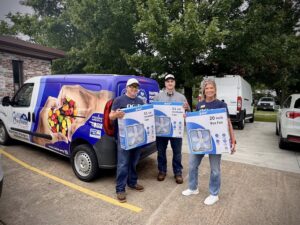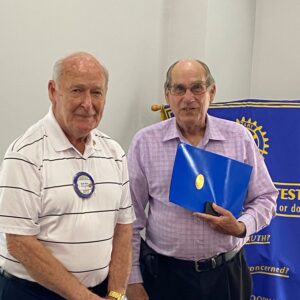Good guys used to wear masks, now they make ‘em, too. Last week there were several calls for masks to be delivered to hospitals. The calls went out on Tulsa TV stations and Facebook. Some hospitals were cutting up bedsheets to make bandannas!
The call was to sewers, not that kind, the kind who sew, who used to be called seamstresses or tailors, and now unadornedly, sewers.

Among my friends, we have thousands of yards of 100 percent cotton fabric, in stripes, florals, polka dots, and paisleys hoarded for quilts, but now out in the open, used to make masks—to be used as a last reso—for medical personnel, nursing home residents, and grateful friends, neighbors, and relatives.
Cathy Jacobs, owner of a local gem, Quilt Styles quilt shop at 18 S. Water St., has joined the party. She has made about 30 masks since she closed her shop (and gathering place) due to CDC guidelines for safety. She has a phone number on her door (and bears in her window. Look for that story elsewhere in the ST.) If anyone wants her to gather the masks made at home for redistribution, for supplies to make them or encouragement and instructions, she is that person. Check out her Facebook page, too. She is one who makes Sapulpa a Great Place to Live!
I found a great video online at buttoncounter.com which gives detailed instructions for masks that local hospitals can use. The only caveat now is that elastic is rarer than hen’s teeth. Who knew we should have been hoarding elastic along with a pick-up load of toilet paper? Or “Toilette Papier,” now that people are trading first edition books, vintage Beatles vinyl, and firstborn children for it.
If you have anything elastic for making bracelets, any color, or elastic for making gathered sleeves from ⅛ to ⅜ inch, please consider donating to one of us.
Retired local judge, April Sellers White, is making masks and told Jacobs that she took 20 of them to local EMTs a couple of days ago. She (and others) could also bring them back to Quilt Styles for distribution. Call Cathy so she can open her shop for you at 918-224-6299.
I took my completed 30 masks directly to Ascension St. John Sapulpa’s Emergency Main Entrance, called the hospital operator, and immediately a charming and grateful admin clerk (ER Admissions) named Mona Tyner (who lives Tulsa) came out and picked them up from me.
Another participant is Bianca Bojorquez, whose husband is Famous Andy of Andy’s Tacos. She needed help getting started, so this is the gist of what I told her:
You will need basic sewing supplies like a sewing machine, pins (ten in each mask), mat and fabric cutter or at least sharp scissors, ruler or measuring slide, and a steam iron.
- Use 100 percent cotton fabric only. (Better known nowadays as “quilt fabric,” it is still in stock at Walmart, Joann’s Fabrics, Atwood’s (feedsack dishtowels) and online at hundreds of sites. Fabricbythepound.com, fabric.com, Amazon.com, and Joann’s all have thousands of yards available as of this writing. (I have about 300 yards myself.)
- Wash it gently in warm water, mild detergent, and no fabric softener before starting.
- Iron it flat with a hot steam iron. No need to starch or straighten it.
- Lay it on a flat surface and make your cuts according to the video. Don’t throw away your scraps, because you will need them for straps until elastic hoarders ease up.
- After the first seam, turn inside out, and iron flat again.
- On a flat surface with a ruler and marking pencil or disappearing quilting marker, make your marks.
- Make the folds as illustrated. Pin them flat.
- Add straps, elastic, ribbon for ear straps about ¼ inch from the edges. Pin. (Don’t use paper or wired ribbon. Grosgrain is best, but any plain cloth ribbon will do. Make each ribbon or fabric strap at least 15 inches long.
- Add small end piece and pin it flat. (See video.)
- After the seams are sewn on the ends, removing pins as you go, iron flat the end piece, and fold over long ends, and bottom to make a tidy flat end to sew down.
- Iron flat again, and toss into finished pile.
- Do them in a production line so you have 30 all done at the end, instead of one at a time.
Remember: These masks are “better than nothing,” “the last resort” and will not keep out any bacteria or prevent you from getting coronavirus. Do not add any filter material, like coffee filters, dryer sheets, or plastic pads, except HEPA filter material, if you have it.
As Cathy Jacobs said,” We don’t want to hurt anybody.”
When the facility receives these masks, they will wash and sanitize them to their specs, so get going! Happy sewing with a purpose.










